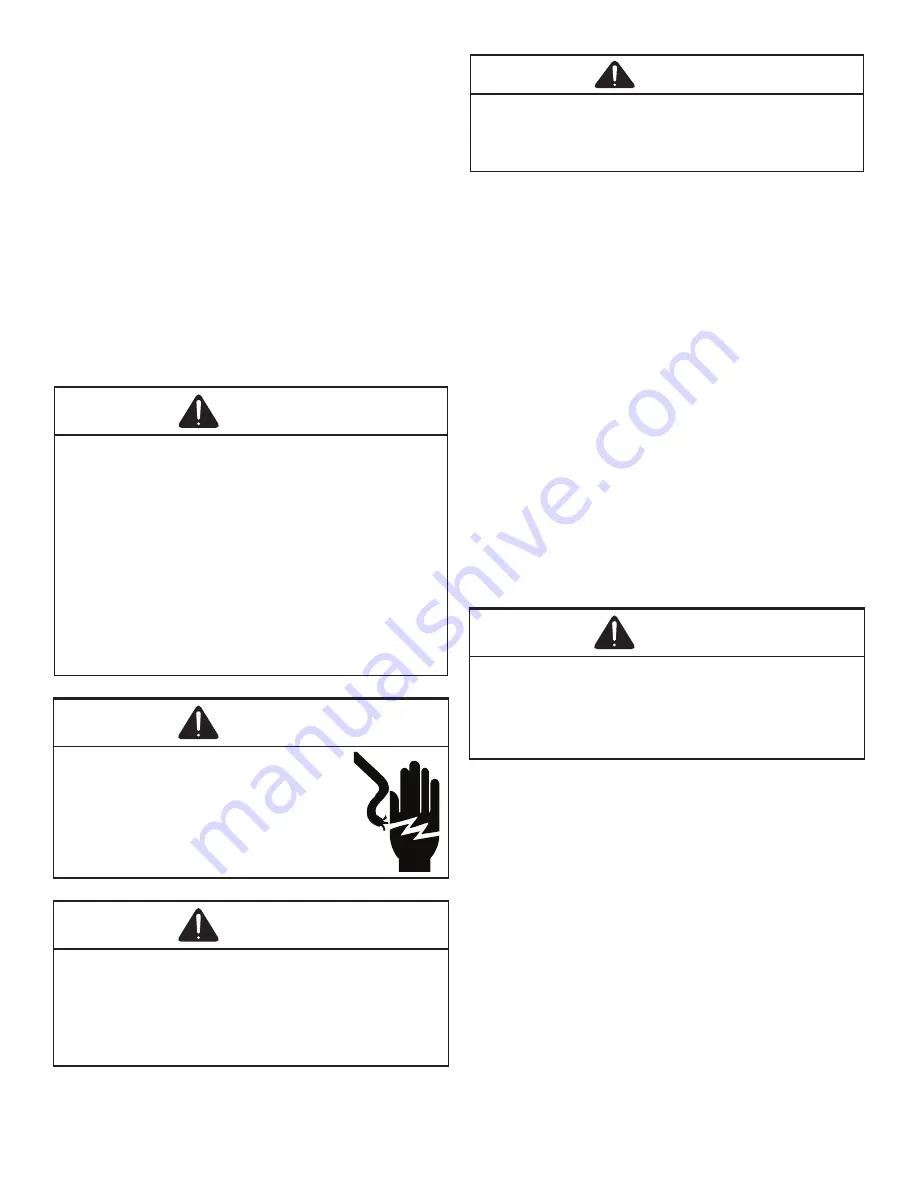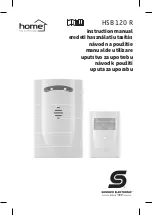
17
During operation the power to the circuit board is
controlled by a temperature sensor, which is clamped to
a feeder tube entering the outdoor coil. Defrost timing
periods of 30,60 and 90 minutes may be selected by
connecting the circuit board jumper to 30, 60 and 90
respectively. Accumulation of time for the timing period
selected starts when the sensor closes (approximately
31° F), and when the wall thermostat calls for heat. At the
end of the timing period, the unit’s defrost cycle will be
initiated provided the sensor remains closed. When the
sensor opens (approximately 75° F), the defrost cycle is
terminated and the timing period is reset. If the defrost
cycle is not terminated due to the sensor temperature, a
ten minute override interrupts the unit’s defrost period.
MAINTENANCE
WARNING
ELECTRICAL SHOCK, FIRE OR EXPLOSION HAZARD
Failure to follow safety warnings exactly could
result in dangerous operation, serious injury,
death or property damage.
Improper servicing could result in dangerous
operation, serious injury, death or property
damage.
•
Before servicing, disconnect all electrical
power to furnace.
•
When servicing controls, label all wires
prior to disconnecting. Reconnect wires
correctly.
•
Verify proper operation after servicing.
WARNING
HIGH VOLTAGE!
Disconnect all power before
servicing or installing this unit.
Multiple power sources may be
present. Failure to do so may cause
property damage, personal injury or
death.
WARNING
To prevent personal injury or death due to
improper installation, adjustment, alteration,
service or maintenance, refer to this manual.
For additional assistance or information,
consult a qualified installer, servicer agency or
the gas supplier.
CAUTION
Sheet metal parts, screws, clips and similar
items inherently have sharp edges, and it
is necessary that the installer and service
personnel exercise caution.
Preventive maintenance is the best way to avoid
unnecessary expense and inconvenience. Have this
system inspected at regular intervals by qualified service
personnel, at least twice a year. Routine maintenance
should cover the following items:
1. Tighten all belts, set screws, and wire connections.
2. Clean evaporator and condenser coils mechanically
or with cold water, if necessary. Usually any fouling
is only matted on the entering air face of the coil and
can be removed by brushing.
3. Lubricate motor bearings.
4. Align or replace belts as needed.
5. Replace filters as needed (see Filters section).
6. Check for blockage of condensate drain.
7. Check power and control voltages.
8. Check running amperage.
9.
Check operating temperatures and pressures.
10. Check and adjust temperature and pressure controls.
11. Check and adjust damper linkages.
12. Check operation of all safety controls.
13. Check condenser fans and tighten set screws.
Filters
CAUTION
To prevent property damage due to fire and loss
of equipment efficiency or equipment damage due
to dust and lint build up on internal parts, never
operate unit without an air filter installed in the
return air system.
Every application may require a different frequency of
replacement of dirty filters. Filters must be replaced at least
every three (3) months during operating seasons.
Dirty filters are the most common cause of inadequate
heating or cooling performance. Filter inspection should be
made at least every two months; more often if necessary
because of local conditions and usage.
Dirty throwaway filters should be discarded and replaced
with a new, clean filter.
Disposable return air filters are supplied with this unit. See
the unit Specification Sheet or Technical Manual for the
correct size and part number. To remove the filters, remove
the filter access panel on return side of the unit.
Summary of Contents for DBC Series
Page 44: ...44...
Page 45: ...45...
Page 46: ...46 THIS PAGE IS INTENTIONALLY LEFT BLANK...
















































